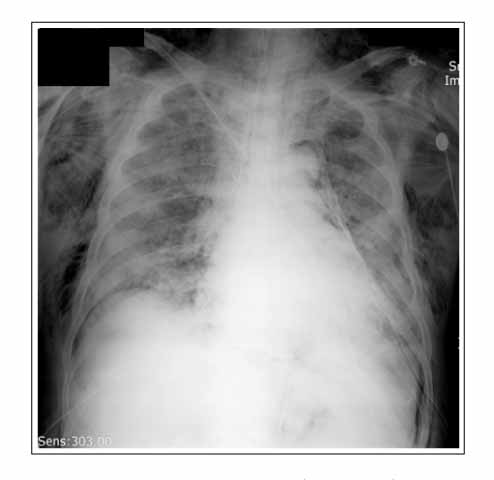Tuberc Respir Dis.
2007 May;62(5):437-440.
A Case of Tracheostomy Induced Bilateral Tension Pneumothorax
- Affiliations
-
- 1Departments of Internal Medicine, Hallym University College of Medicine, Seoul, Korea. thoraxmd@hallym.or.kr
Abstract
- Tracheostomy is one of the oldest surgical procedures in medical history. The indications for a tracheostomy include the relief of an upper airway obstruction, long-term mechanical ventilation, and decreased airway resistance to help wean the patient from mechanical ventilator support. Unfortunately, tracheostomy is also associated with a number of problems including, bleeding, infection, pneumothorax, and tracheal stenosis. A pneumothorax is an uncommon complication of a tracheostomy, and can result from direct injury to the pleura or positive pressure ventilation through a dislocation of the tracheostomy tube. We report an uncommon case of a tracheostomy-induced bilateral tension pneumothorax with a review of the literature.
Keyword
MeSH Terms
Figure
Reference
-
1. Heffner JE, Miller KS, Sahn SA. Tracheostomy in the intensive care unit. Part 1: indications, technique, management. Chest. 1986. 90:269–274.2. Yoon YH, Lee JD. The clinical observation on 299 of tracheostomy. Korean J Otolaryngol - Head Neck Surg. 1983. 26:850–864.3. Yung MW, Snowdon SL. Respiratory resistance of tracheostomy tubes. Arch Otolaryngol. 1984. 110:591–595.4. Heffner JE, Miller KS, Sahn SA. Tracheostomy in the intensive care unit. Part 2: complications. Chest. 1986. 90:430–436.5. Stemmer EA, Oliver C, Carey JP, Connolly JE. Fatal complications of tracheotomy. Am J Surg. 1976. 131:288–290.6. Lewis RJ. Tracheostomies: indications, timing, and complications. Clin Chest Med. 1992. 13:137–149.7. Ciaglia P, Firsching R, Syniec C. Elective percutaneous dilational tracheostomy. A new simple bedside procedures; preliminary report. Chest. 1985. 87:715–719.8. Fikkers BG, van Veen JA, Kooloos JG, Pickkers P, van den Hoogen FJ, Hillen B, et al. Emphysema and pneumothorax after percutaneous tracheostomy: case reports and an anatomic study. Chest. 2004. 125:1805–1814.9. MacCallum PL, Parnes LS, Sharpe MD, Harris C. Comparison of open, percutaneous, and translaryngeal tracheostomies. Otolaryngol Head Neck Surg. 2000. 122:686–690.10. Dulguerov P, Gysin C, Perneger TV, Chevrolet JC. Percutaneous or surgical tracheostomy: a meta-analysis. Crit Care Med. 1999. 27:1617–1625.11. Nam EC, Nam SY, Kim SY. Complications of tracheostomy in 168 Cases. Korean J Otolaryngol - Head Neck Surg. 1998. 41:257–260.
- Full Text Links
- Actions
-
Cited
- CITED
-
- Close
- Share
- Similar articles
-
- Life-threatening tension pneumothorax after unsuccessful tracheostomy tube exchange in a trauma patient - A case report -
- Simultaneous Bilateral Spontaneous Pneumothorax
- Life-Threatening Simultaneous Bilateral Spontaneous Tension Pneumothorax: A case report
- Occurrence of bilateral pneumothorax during tracheostomy in a patient with deep neck infection
- Bilateral Tension Pneumothorax during General Anesthesia - Case report





